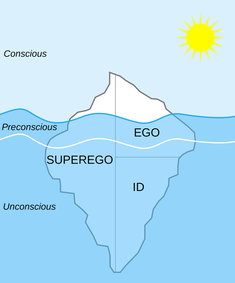16 mark Essays-The Psychodynamic Approach
Struggling to write top band 16-mark essays on the Psychodynamic Approach? Below you'll find exam-style model answers, written in the AO1–AO3 structure examiners love.”
A student asked his teacher: “Why are there so many approaches in psychology?”
The teacher replied: “Because each has something different to offer to our understanding of the human mind and behaviour. This means that every approach is unique.”
Discuss what makes the psychodynamic approach unique in psychology. Refer to other approaches in your answer. (Total 16 marks)
Model Answer
The psychodynamic approach to psychology is distinguished by its unique emphasis on the unconscious mind, instinctual drives, psychodynamic conflict, childhood experiences, and the psychosexual/psychosocial stages of development. Sigmund Freud, the founder of psychoanalysis, proposed that much of human behavior is motivated by unconscious forces, including repressed memories and desires. The psychodynamic approach posits that these unconscious influences give rise to conflicts within the individual, shaping their thoughts, emotions, and behaviours.
One defining feature of the psychodynamic approach is its focus on the structure of personality, consisting of the id, ego, and superego. The id operates on the pleasure principle, seeking immediate gratification of desires. The ego mediates between the id and superego, balancing the conflicting demands of instinctual drives and societal norms, while the superego acts as a moral guide, internalising societal values. This structural model provides a unique lens through which psychologists following the psychodynamic approach interpret human behaviour.
Comparatively, the psychodynamic approach stands out in its attention to the power of the unconscious mind when juxtaposed with the humanistic approach. While humanistic psychologists focus on conscious subjective experiences and the individual's potential for personal growth and fulfilment, psychodynamic theorists delve into the hidden realms of the unconscious, exploring the impact of repressed memories and desires on behaviour.
Furthermore, the psychodynamic approach's emphasis on psychosexual and psychosocial stages of development distinguishes it from other perspectives. In contrast to behaviourism and the biological approach, which often emphasise development as a continual process, the psychodynamic approach proposes distinct stages with specific challenges and conflicts at each juncture. This notion of stages, particularly the psychosexual stages, contrasts with the behaviourist perspective, which might view development as a continuous learning process based on observable behaviours.
Another point of distinction arises when comparing the psychodynamic approach to social learning theory (SLT) and the cognitive approach. The psychodynamic approach focuses on internal, unconscious processes contributing to behaviour, while SLT and the cognitive approach emphasise observable behaviours and conscious, mediating cognitive processes. The psychodynamic perspective delves into the hidden motivations and conflicts that may not be immediately observable, adding a unique dimension to the understanding of human behaviour.
Your Psychology Exam Just Got Easier
Tick the topics you need help with below and we will email you expert answers.
Outline key features of the cognitive approach in psychology. Compare the cognitive approach with the psychodynamic approach. (Total 16 marks)
Model Answer
Cognitive Approach:
The cognitive approach in psychology encompasses key features such as the recognition that both conscious and unconscious thoughts influence behavior. It posits that thought processes mediate between stimuli and responses, operating as an information processing system akin to a computer. The cognitive approach adopts models to understand mental processes, emphasising that the human mind actively processes information. Additionally, it asserts that mental processes can be scientifically studied, contributing to a systematic understanding of cognition. The cognitive approach views individuals as conscious, logical thinkers, focusing on the intellectual and cognitive development stages, including moral development from early childhood to adolescence.
A pivotal distinction between the cognitive and psychodynamic approaches emerges in their treatment of conscious versus unconscious thought. The cognitive approach characterises individuals as conscious, logical thinkers, placing prominence on the rational processing of information. In contrast, the psychodynamic approach, while acknowledging the conscious level, places a primary focus on the unconscious, delving into the hidden realms of instinctual drives, emotions, and repressed memories.
Another noteworthy difference lies in their treatment of emotions and childhood experiences. The cognitive approach adopts an information processing approach, largely sidelining emotions in its pursuit of understanding mental processes. In contrast, the psychodynamic approach distinctly emphasises the role of emotions and early life experiences, positing that these factors significantly shape an individual's psyche and subsequent behaviours.
A crucial divergence between the cognitive and psychodynamic approaches lies in their conceptualization of the individual's role and the nature of determinism. The cognitive approach asserts that individuals engage in active processing of information, highlighting the role of conscious, logical thought processes. This perspective aligns with an element of free will or soft determinism, suggesting that individuals have a degree of autonomy in their decision-making and behaviour.
Conversely, the psychodynamic approach portrays the individual as more passive, with behaviour determined by unconscious forces, conflicts, and early life experiences. Freudian psychoanalysis, a cornerstone of the psychodynamic approach, often leans towards a deterministic viewpoint, positing that unconscious drives and unresolved conflicts dictate behaviour.
💛 Found this helpful?
If these model answers saved you time or boosted your confidence, consider supporting Yum Yum Mama. Every little helps us create more free, teacher-made resources for Psychology students like you!
💸 Support Yum Yum Mama

